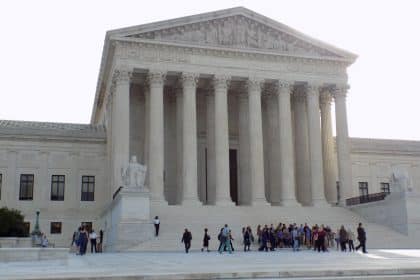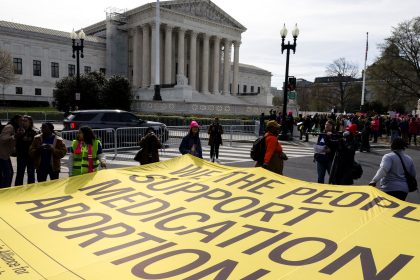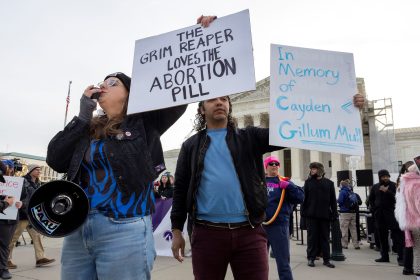Dobbs Now Supreme Court’s Most Anticipated Decision In Years
Court Considers the Past, Present and Future of Roe v. Wade
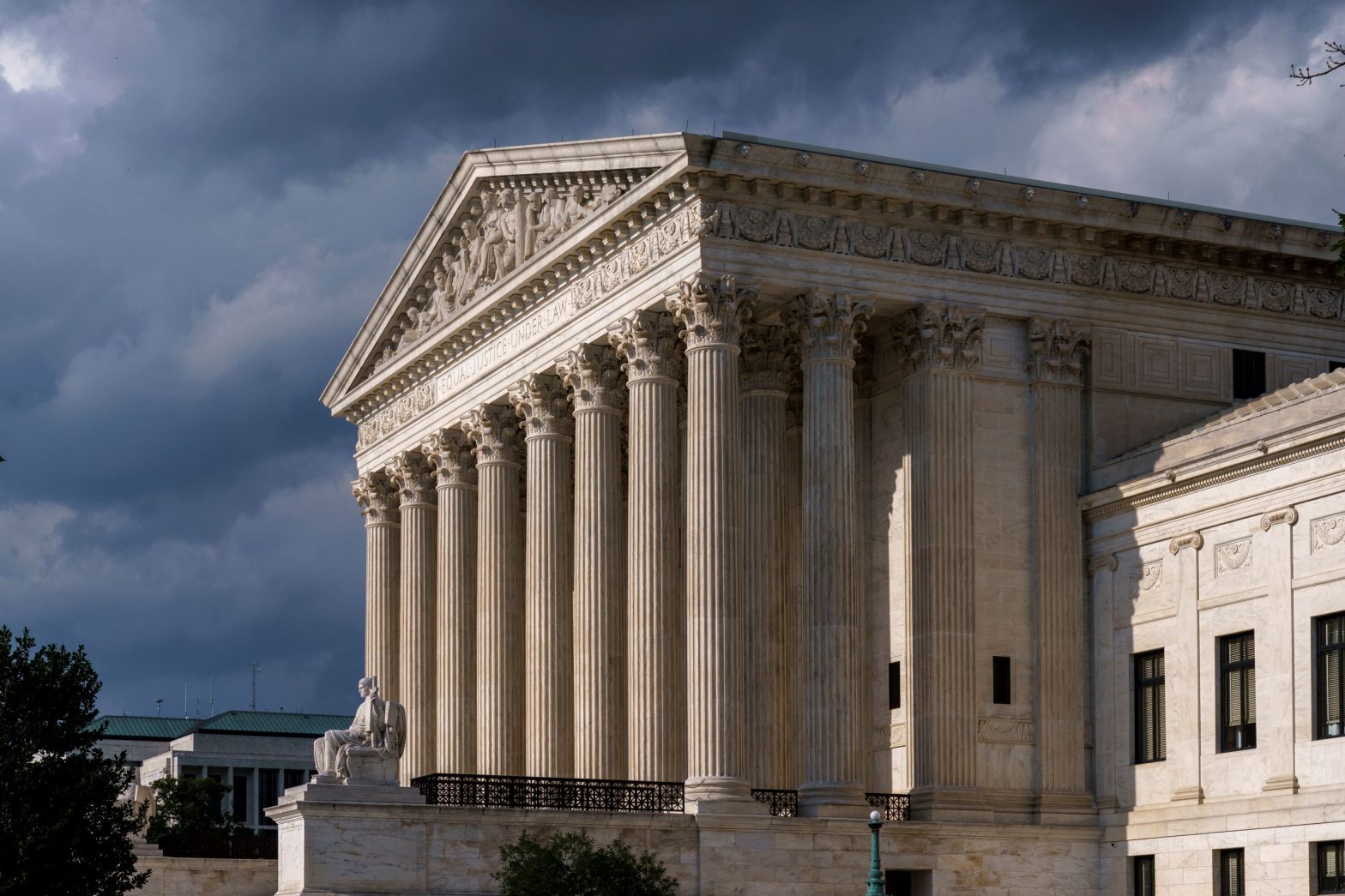
WASHINGTON — It wasn’t even the top headline in The New York Times the day after the decision was announced.
That distinction went to the death of former President Lyndon Baines Johnson, who had died at age 64 after suffering a heart attack at his ranch in Johnson City, Texas.
That news relegated the Supreme Court’s landmark decision in the case of Roe v. Wade, in which it overruled all state laws that prohibit or restrict a woman’s right to obtain an abortion during the first three months of pregnancy, to a rare second deck banner headline on the front page.
Rare has it been since then that Roe and the seething argument it inspired has taken a back seat to any event or debate in American life.
Attempts to overturn the 7-2 decision the court handed down on Jan. 22, 1973, have been as fierce as they have been constant.
Over the past 50 years, political candidates have sparred over it and the “balance of the court” has been a hot topic whenever a justice died or retired from what has typically been a closely divided court, philosophically speaking, in the interim.
The Court Cases
In 1989, a more conservative court than that which had ruled on Roe, held that states could, in fact, impose certain restrictions on the availability of abortions, including prohibiting abortions at hospitals that receive public funding.
Webster v. Reproductive Health Services was a shot across the bow for pro-choice advocates because Roe survived but it showed that a majroity of the court at the time no longer thought of abortion as a constitutional right.
In fact it effectively made clear that given the right set of circumstances, they were prepared to uphold state restrictions on abortion that had been ruled unconstitutional over the previous 16 years by evolving sets of justices.
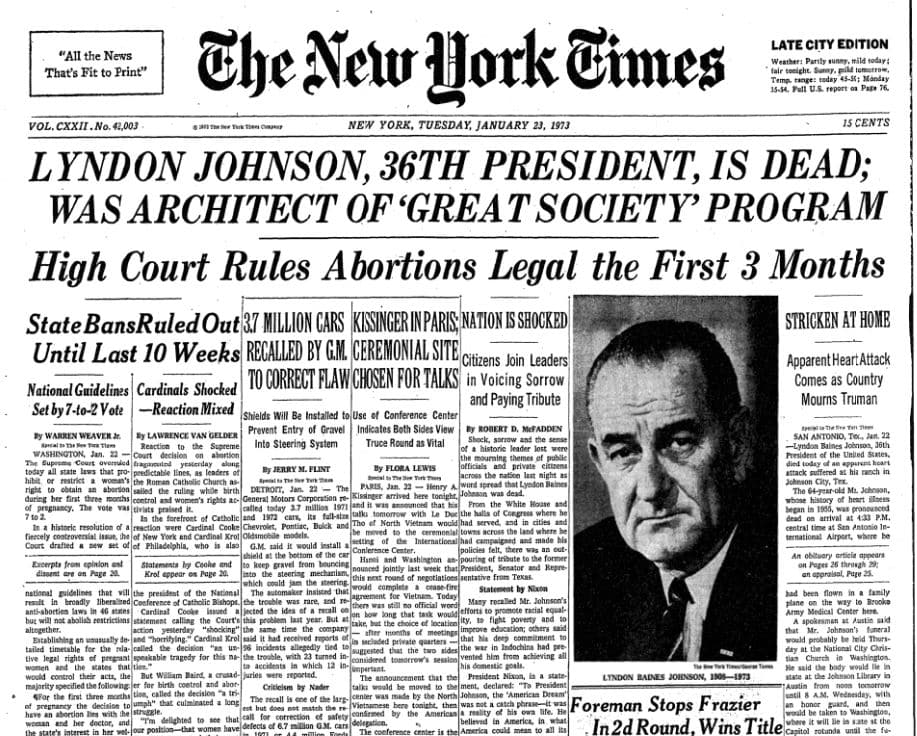
At the time, the high court was hearing two or three abortion-related cases each term, and then-Attorney General Dick Thornburgh predicted on CNN’s “Evans and Novak” program that it wouldn’t be long until the justices threw out Roe altogether.
Then came Planned Parenthood of Southeastern Pa. v. Casey, the 1992 case in which the court said “a state may not prohibit any woman from making the ultimate decision to terminate her pregnancy before viability,” reaffirming the constitutional right to abortion that the court first recognized in Roe v. Wade.
To those in the anti-abortion camp, Roe and Casey have been a two-headed monster ever since. And they see Dobbs v. Jackson Women’s Health Organization, which was argued before the Supreme Court last week, as the case that could slay the dragon once and for all.
At issue is the Gestational Age Act, which was enacted by the Mississippi legislature in 2018, but has never gone into effect.
The act bans almost all abortions after the 15th week of pregnancy. U.S. District Judge Carlton Reeves, presiding in the federal court in Jackson, Mississippi, struck down the law, stating lawmakers have deliberately passed an act they knew was unconstitutional “to enforce a decades-long campaign, fueled by interest groups, to ask the Supreme Court to overturn Roe v. Wade.”
The case then moved on to the conservative 5th Circuit Court of Appeals, where, to the surprise of some Mississippi lawmakers, a three-judge panel affirmed the district court’s ruling.
Writing for the appeals panel, U.S. Circuit Judge Patrick Higginbotham said states “may regulate abortion procedures prior to viability so long as they do not impose an undue burden on the woman’s right, but they may not ban abortions.”
Mississippi then asked the Supreme Court to weigh in, and the justices agreed, granting review to only one question raised by the legal dispute: whether all pre-viability prohibitions on elective abortions are unconstitutional.
What Roe Says
When it decided Roe, the Supreme Court drafted a new set of national guidelines for regulating abortion in the states, and laid out a detailed timetable for what the Times described as “the relative legal rights of pregnant women and the states that would control their acts.”
Specifically, the justices said that for the first three months of pregnancy, the decision to have an abortion lies with the woman and her doctor, and the state’s interest in the matter is not “compelling” enough to warrant any interference.
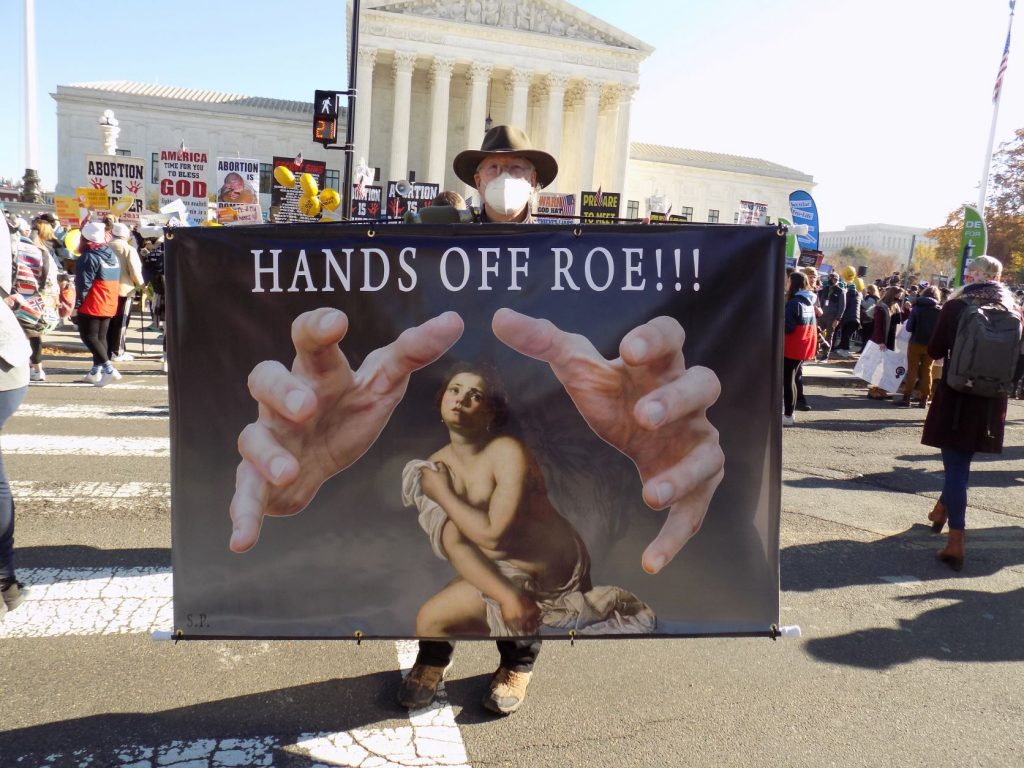
Secondly, they held that for the next six months of pregnancy, a state could regulate an abortion procedure in ways “reasonably related to maternal health.” Effectively this meant states could license and regulate the professionals and facilities involved in performing the procedure.
Lastly, it said that for the last 10 weeks of pregnancy — the period during which a fetus was judged to be capable of surviving if born circa the state of medical science in 1973 — any state could prohibit abortions, if it so wanted. The justices, however, drew a line here as well, holding states could not intervene if the abortion was necessary to preserve the life or health of the mother.
Justice Harry A. Blackmun wrote the majority opinion in which Chief Justice Warren Burger and Justices William Douglas, William Brennan Jr., Potter Stewart, Thurgood Marshall and Lewis Powell Jr. joined.
Dissenting were Justices Byron White and William Rehnquist.
In the majority opinion, Justice Blackmun wrote that the constitutional right of privacy, developed by the court over many years and a series of decisions, was “broad enough to encompass a woman’s decision whether or not to terminate her pregnancy.”
He rejected, however, the argument that this right was absolute. Advocates for Roe, including several women’s rights groups, had argued a woman is “entitled to terminate her pregnancy at whatever time, in whatever way and for whatever reason she alone chooses,” he wrote.
“With this we do not agree,” Blackmun said.
“A state may properly assert important interests in safeguarding health by maintaining medical standards and in protecting potential life,” the justice wrote. “At some point in pregnancy, these respective interests become sufficiently compelling to sustain regulation of the factors that govern the abortion decision.”
Despite what some might have seen as conciliatory language, Justice White, in dissent, called the majority decision “an exercise of raw judicial power.”
“The Court apparently values the convenience of the pregnant mother more than the continued existence and development of the life or potential life which she carries,” White wrote.
And there the battle lines have been drawn ever since.
In joining in a dissent in Casey, Justice Clarence Thomas, the only justice still on the court who participated in the case, sided with White, stating “Roe was wrongly decided … and it can and should be overruled.”
Mississippi Argues States Should Decide
During nearly two hours of oral argument last Wednesday, that was exactly Mississippi Solicitor General Scott Stewart’s position.
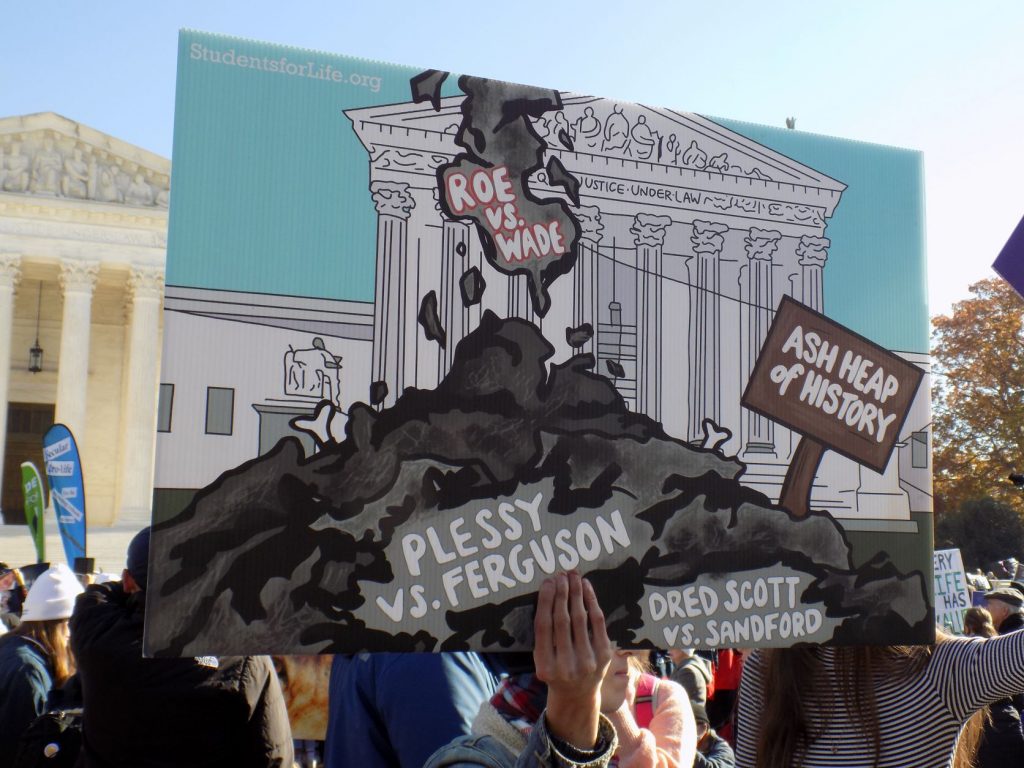
“Roe v. Wade and Planned Parenthood v. Casey haunt our country,” Stewart said at the very start of his argument. “They have no basis in the Constitution. They have no home in our history or traditions. They’ve damaged the democratic process. They’ve poisoned the law. They’ve choked off compromise.
“For 50 years, they’ve kept this court at the center of a political battle that it can never resolve. And 50 years on, they stand alone. Nowhere else does this court recognize a right to end a human life,” he added.
“Roe and Casey’s core holding, according to those courts, is that the people can protect an unborn girl’s life when she just barely can survive outside the womb but not any earlier when she needs a little more help.
“That is the world under Roe and Casey,” Stewart continued. “That is not the world the Constitution promises. The Constitution places its trust in the people. On hard issue after hard issue, the people make this country work.”
In other words, Stewart argued, legislatures, not courts, should be the final arbiter of the matter.
Legal Precedents
Justice Stephen Breyer immediately sought to bring the court back to the world of legal precedent.
In doing so, he noted that Casey did two things. One, he said, was that it reaffirmed Roe. But at the same time it also set out what stare decisis principles should be used to overrule cases like Roe.
Stare decisis is Latin for “to stand by things decided.” It is the legal doctrine that obligates courts to follow historical cases when making a ruling on a similar case.
The Casey court, Breyer said, singled out Roe as special.
“What’s special about it? They say it’s rare. They call it a watershed. Why? Because the country is divided. Because feelings run high. And yet the country, for better or for worse, decided to resolve their differences by this court laying down a constitutional principle, in this case, women’s choice,” the justice said.
“All right. That’s what makes it rare,” he continued, noting the Casey court cautioned future courts that they should be even more careful when considering overturning such a watershed case than an ordinary case.
“[They felt it] particularly important to show [that our] overturning a case is grounded in principle and not social pressure, not political pressure,” Breyer said.
“To overrule under fire in the absence of the most compelling reason, to reexamine a watershed decision, would subvert the Court’s legitimacy beyond any serious question,” he added, again referencing Casey directly.

He then quoted Justice Potter Stewart on the same point.
Potter wrote at the time that “overruling unnecessarily and under pressure would lead to condemnation, the court’s loss of confidence in the judiciary, the ability of the court to exercise the judicial power and to function as the Supreme Court of a nation dedicated to the rule of law.”
Stewart tried to counter by arguing Casey actually struck down precedents and, among other things, jettisoned the trimester framework of Roe itself, inserting the concept that states could not place an “undue burden” on women seeking abortions before fetal viability.
When Roe was decided, viability was around 28 weeks. Today, depending on the medical facility, fetuses can survive outside the womb after around 23 weeks.
But Justice Sonia Sotomayor stopped him short.
“The right of a woman to choose, the right to control her own body, has been clearly set since Casey and never challenged,” she said.
“What you want is for us to reject the old line establishing viability and adopt something else,” Sotomayor continued. “But Casey affirmed the viability line and in the 30 years since, 15 judges have agreed with that and four have said they disagree — two of them members of this court.”
Sotomayor then turned to the case at hand, noting the sponsors of the act in the Mississippi legislature outright declared they were promoting the legislation because former President Donald Trump had added three new justices, tilting the philosophical bent of the court to the right.
“Will this institution survive the stench that this creates in the public perception that the Constitution and its reading are just political acts?” she asked.
Stewart stammered to reply.
“I don’t see how it’s possible,” Sotomayor continued.
Referring back to Breyer’s comments, the justice said, “This is what Casey talked about when it talked about watershed decisions.”
Some decisions of the court — Sotomayor mentioned Brown v. Board of Education, in which the court ruled that state laws establishing racial segregation in public schools are unconstitutional, and New York Times Co. v. Sullivan, in which the court ruled the First Amendment restricts the ability of public officials to sue the press for defamation — have endured because of “an entrenched set of expectations in our society.”
“And the expectation was, this is what the court has decided, this is what we will follow,” she said. “None of these decisions — and no other set of rights, including the Second Amendment, by the way — can survive if people don’t have that belief.
“I mean, there are many political people who believe the court erred in seeing ownership of a gun as a personal right as opposed to a militia right,” Sotomayor continued.
“If people actually believe that it’s all political, how will we survive? How will the court survive?”
“I think the concern about appearing political makes it absolutely imperative that the court reach a decision well grounded in the Constitution in text, structure, history and tradition,” Stewart said.
“Casey did that,” Sotomayor said.
“No it didn’t, your honor, respectfully,” Stewart said.
“Casey went through each and every one of them. You think it did it wrong. That’s your belief.
But Casey did that,” Sotomayor said.
Legislatures Should Make Decisions on Fetal Viability
Much of the debate over the politicization of the court — a thread that would be picked up by other justices throughout oral arguments — could be interpreted as a play for the support of Chief Justice John Roberts, who has long pushed back at the notion that the Supreme Court is as political as any other governmental entity.
But Roberts at least appeared to agree with Stewart that some interpretations related to Roe went beyond what was intended by the text.
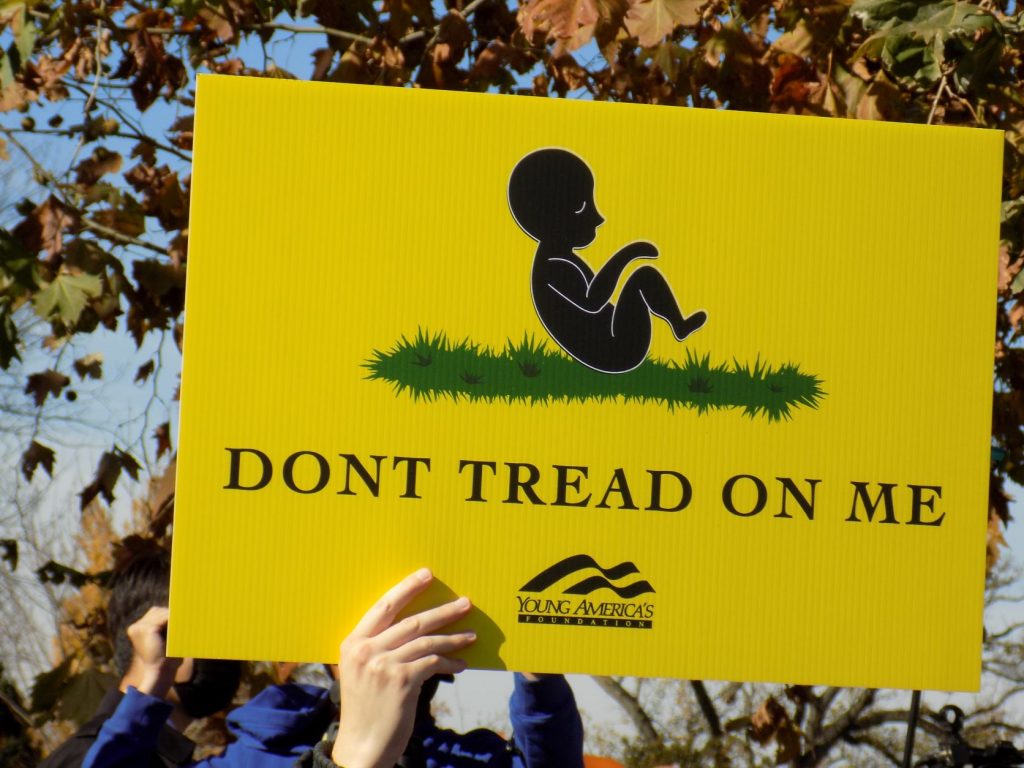
Relying on memory and apologizing for doing so, Roberts recalled that in his papers, Justice Blackmun had noted the viability line the court was presumed to have drawn was actually “dicta.”
In law, dicta is a comment, suggestion or observation made by a judge in an opinion that is not necessary to resolve the case, and as such, is not legally binding on other courts.
“And then in Casey, [the justices] said viability was the core principle or a central principle in Roe,” Roberts said. “It said this after tossing out the trimester formula, which many people thought was the core principle. Was viability at issue in Casey?”
“Not squarely,” said Stewart. “But it’s a little hard not to take the court at its word when it emphasizes that viability is the central part of Roe.”
Later, Stewart said the fundamental problem with the question of viability is that “it is not tethered to anything in the Constitution.”
“It’s a quintessentially legislative line. A legislature could think that viability makes sense … as a place to draw the line, but it’s quite reasonable for a legislature to amend that line and draw it elsewhere.”
Here again, he ran afoul of Sotomayor.
“Counsel, there’s much that’s not in the Constitution, including the fact that we have the last word. That was determined by the case Marbury v. Madison,” she said. “There is nothing in the Constitution that says the Supreme Court is the last word on what the Constitution means. That notion was totally novel at the time. And yet, what the court did was reason from the structure of the Constitution that that’s what was intended.”
“And here, in Casey and in Roe, the Court said there is inherent in our structure that there are certain personal decisions that belong to individuals and the states can’t intrude on them,” Sotomayor said.
Justice Brett Kavanaugh then weighed in.
“As I understand it, you’re arguing that the Constitution’s silent and, therefore, neutral on the question of abortion. In other words, that the Constitution is neither pro-life nor pro-choice on the question of abortion but leaves the issue for the people of the states or perhaps Congress to resolve in the Democratic process. Is that accurate?”
“We’re saying it’s left to the people, your honor,” Stewart said.
“So if you were to prevail, the states, or many of the states could still, presumably continue to freely allow abortion … they could do that even if you prevail here, is that correct?”
“That’s consistent with our view,” Stewart said.
Mississippi Law Flatly Unconstitutional
Julie Rikelman, litigation director for the Center of Reproductive Rights, argued the case on behalf of the respondents. Like Stewart, she wasted no time in making her overriding position clear.
“Mississippi’s ban on abortion two months before viability is flatly unconstitutional under decades of precedent,” she said. “Mississippi asks the court to dismantle this precedent and allow states to force women to remain pregnant and give birth against their will.”

Addressing the exchanges that came before her turn to speak, Rikelman said Casey set an especially high bar for overturning either it or Roe, and that the justices who decided that case were correct in doing so.
“For a state to take control of a woman’s body and demand that she go through pregnancy and childbirth with all the physical risks and life-altering consequences that brings is a fundamental deprivation of her liberty,” she said, adding, “eliminating or reducing the right to abortion will propel women backwards.
“Two generations have now relied on this right, and one out of every four women makes the decision to end a pregnancy,” she added.
Chief Justice Roberts acknowledged that whichever way the court rules will have an impact on women and their place in society.
“What we have before us, though, is a 15-week standard,” he said. “If you think that the issue is one of choice, that women should have a choice to terminate their pregnancy, that supposes that there is a point at which they’ve made the fair choice, and had an opportunity to make that choice. It seems to me viability doesn’t have anything to do with choice; why would 15 weeks then not be enough time?”
“First, the state has conceded that some women will be be able to obtain an abortion before 15 weeks and this law will bar them from doing so afterwards,” Rikelman said. “Beyond that, allowing states to draw arbitrary lines would be both less principled and less workable than viability.
“One of the reasons for that is, without viability, there will be no stopping point,” she said. “States will rush to ban abortion at virtually any point in pregnancy. Mississippi itself has a six-week ban that it’s defending with very similar arguments as it’s using to defend the 15-week ban.”
Rikelman went on to argue that the viability line has proved “enduringly workable” in the 50 years that it has been applied by lower courts.
She also said that if Mississippi were to prevail in this case, the prohibition it places on abortion would come down hardest on poor and minority women, preventing them from exercising a Constitutional right.
“That’s just not how constitutional rights work,” she said. “A state would never say that it could ban religious services on a Wednesday evening, for example, simply because most people could attend religious services on another night of the week.”
Justice Clarence Thomas then asked what specific constitutional right protects the right to abortion.
“Is it privacy? Is it autonomy?” he asked.
“It’s liberty,” Rikelman said. “It’s the textual protection in the Fourteenth Amendment that a state can’t deprive a person of liberty without due process of law, and the court has interpreted liberty to include the right to make family decisions and the right to physical autonomy, including the right to end a pre-viability pregnancy.
“And the right exists whatever level of generality the court applies,” she continued. “There was a tradition under the common law for centuries of women being able to end their pregnancies.
“But, in addition, when it comes to decisions related to family, marriage and childbearing, the court has done the analysis at a higher level of generality, and that makes sense because, otherwise, the Constitution would reinforce the historical discrimination against women,” she said.
Justice Kavanagh noted that when it comes to abortion, the court has repeatedly been forced to pick sides on the most contentious social debate in American life, “and to do so, as the other side has suggested, in a situation where the Constitution is neutral on the question of abortion, the text and the history.”
“They argue the question of abortion should be left to the peple, to the states, or to Congress, and that we, the court, should return to a position of neutrality on this issue. What’s your answer to that?”
“First, of course, those very same arguments were made in Casey, and the court rejected them, saying that this philosophical disagreement can’t be resolved in a way that a woman has no choice in the matter,” Rikelman said.
“Second, I don’t think it would be a neutral position. The Constitution provides a guarantee of liberty. The Court has interpreted that liberty to include the ability to make decisions related to childbearing, marriage and family,” she continued. “Women have an equal right to liberty under the Constitution, your honor, and if they’re not able to make this decision, if states can take control of women’s bodies and force them to endure months of pregnancy and childbirth, then they will never have equal status under the Constitution.”
Overruling Roe
Elizabeth Barchas Prelogar, solicitor general of the United States only since October, argued the Biden administration’s view, as amicus curiae.
“The real-world effects of overruling Roe and Casey would be severe and swift,” Prelogar said. “Nearly half of the states already have or are expected to enact bans on abortion at all stages of pregnancy, many without exceptions for rape or incest.
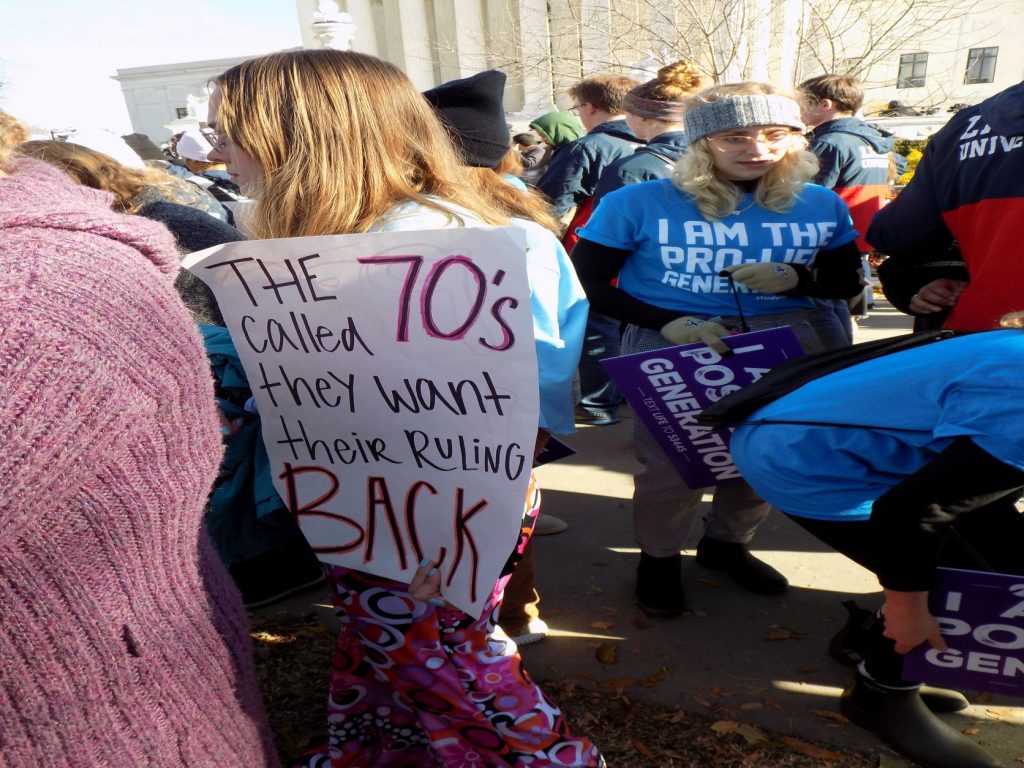
“If this court renounces the liberty interest recognized in Roe and reaffirmed in Casey, it would be an unprecedented contraction of individual rights and a stark departure from principles of stare decisis,” she continued. “The court has never revoked a right that is so fundamental to so many Americans and so central to their ability to participate fully and equally in society. The court should not overrule this central component of women’s liberty.”
Justice Thomas again wanted to know in what part of the Constitution the right to an abortion was grounded.
“Is it autonomy? Is it privacy?” he asked again.
“The right is grounded in the liberty component of the Fourteenth Amendment, Justice Thomas, but I think that it promotes interest in autonomy, bodily integrity, liberty and equality,” Prelogar said.
“So the right specifically is abortion?” Justice Thomas asked.
“It’s the right of a woman prior to viability to control whether to continue with the pregnancy, yes,” Prelogar said.
Later, in an exchange with Chief Justice Roberts, Prelogar returned to the respondents’ fear that should the court reverse the “liberty interest altogether,” as Mississippi is seeking, “or leave it up in the air, then immediately states with six-week bans, eight-week bans, ten-week bans and so on,” and there would be no continued guidance from the court on the scope of a women’s liberty interest going forward.
“That may be what they’re asking for, but the thing that is at issue before us today is 15 weeks,” Roberts said.
“Casey emphasized in reaffirming the viability line, the court justified that as having both a logical and a biological justification that it marks the point in pregnancy when the fetus is capable of meaningful life,” Prelogar said.
“No, that’s what John Hart Ely explained was a complete syllogism. That’s the definition of viability. It’s not a reason that viability is a good line,” Roberts responded.
Justice Gorsuch sought to clarify the line of inquiry.
“If this court were to reject the viability line, do you see any other intelligible principle that the Court could choose?”
“Well,” Prelogar said, pausing just a moment to collect her thoughts. “I think that it would be critically important, even if this court were to reject the viability line, to reinforce and reaffirm the fundamental and profound liberty interest.”
President, House Democrats Support Codifying Roe in Law
As is their custom, the justices gave no indication when they might hand down their ruling in Dobbs, though it’s likely to come late in the spring and very well could be the last opinion released when the term ends in late June.
That very well could make it the hot-button issue of the 2022 midterm elections, and depending on how the court rules, could spur Senate action on the House-passed Women’s Health Protection Act.

Led by Rep. Judy Chu, D-Calif., the bill establishes a statutory right for health care providers to provide, and their patients to receive, abortion care free from medically unnecessary restrictions, limitations and bans that delay access to such care.
It also includes a provision specifically enabling the Justice Department, abortion providers and individuals harmed by restrictions made unlawful under the act to go to court to enforce these rights.
The act passed the House in September by a 218-211 vote.
A companion bill has been introduced in the Senate by Sens. Richard Blumenthal, D-Conn., and Tammy Baldwin, D-Wis.
Last Wednesday, as the oral arguments were occurring, House Speaker Nancy Pelosi said that with Dobbs the high court “has the opportunity and responsibility to honor the Constitution, the law and this basic truth: every woman has the constitutional right to basic reproductive health care.”
“Mississippi’s radical abortion ban, part of a nationwide assault against women’s freedoms targeting in particular women of color and women from low-income communities, is brazenly unconstitutional and designed to destroy Roe v. Wade,” Pelosi said. “The constitutional right to an abortion has been repeatedly affirmed, and any failure to fully strike down the Mississippi ban would seriously erode the legitimacy of the court, as the court itself warned in its ruling in Casey, and question its commitment to the rule of law itself.”
Meanwhile at the White House, spokeswoman Jen Psaki told reporters President Biden is a strong supporter of the Women’s Health Protection Act, and is commiting “to working with Congress to codify the constitutional right to safe and legal abortion, as protected by Roe.
Psaki went on to say the president believes the Mississippi law blatantly violates a woman’s constitutional right to a safe and legal abortion and that “every American deserves access to health care, including reproductive health care.”
“We’re not going to predetermine how the Supreme Court will rule, but he supports codifying Roe through Congress. That’s something that they can act to do,” Psaki concluded.
Dan can be reached at [email protected] and at https://twitter.com/DanMcCue



















